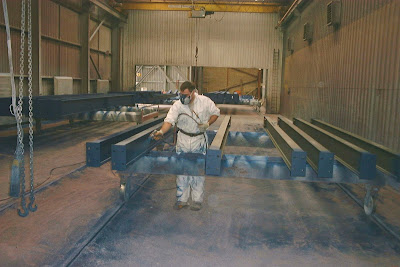
When designing and testing local exhaust ventilation systems we need to pay particular attention to the design of the extraction hoods - where the contaminant enters the system. If this isn't right then the system is unlikely to be effective at controlling contaminants. However, this doesn't mean that we shouldn't ensure that other aspects of the system are properly designed.
In many cases the system will exhaust outdoors and its then important to ensure that any contaminants remaining in the airstream are dispersed effectively so that they do not re-enter the building. This means that they shouldn't be located too close to any air intakes, vents or windows. It is also particularly important that the stack is high enough. A good "rule of thumb" to follow is that the stack should be at leas one third the height of the building (i.e. it should release at a height 1.33 times the building height). The stacks on the laboratory building shown in the picture above meet this criterion. There are plenty of others out there that don't! Here's a few.



